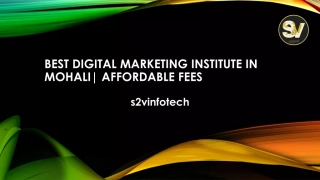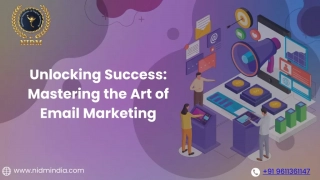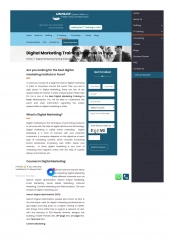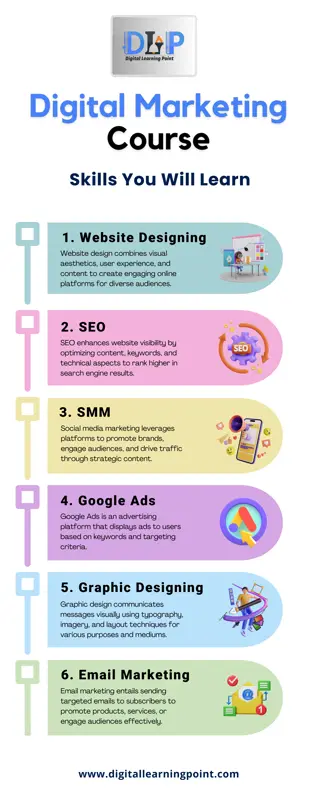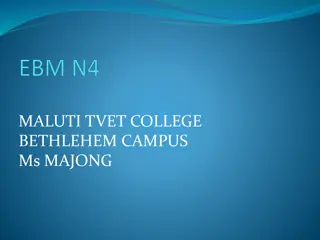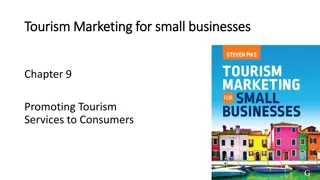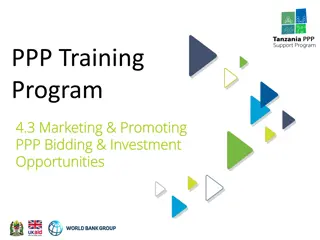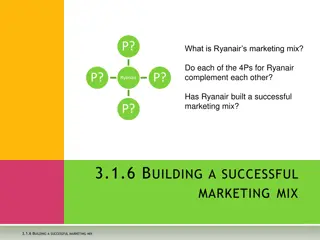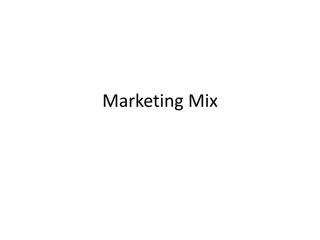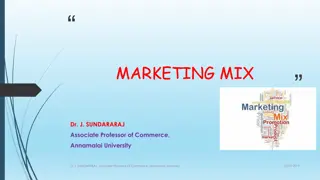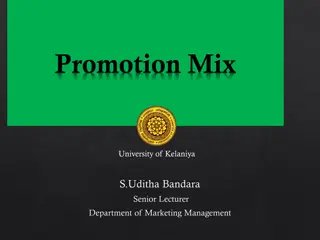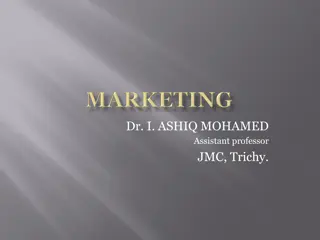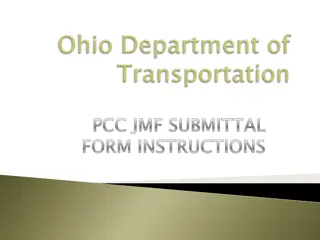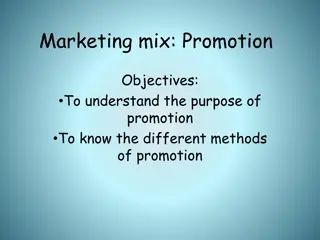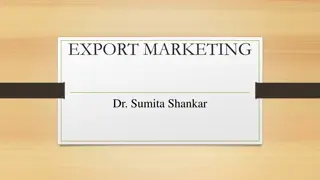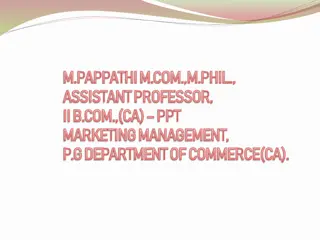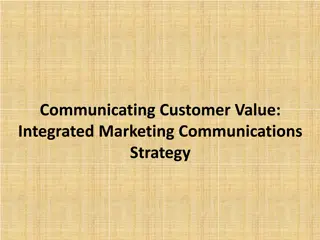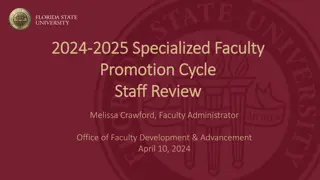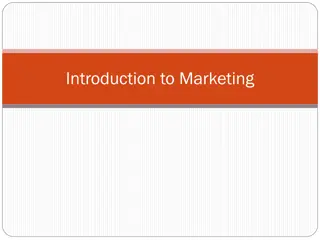Understanding the Promotion Mix in Marketing
The promotion mix in marketing comprises various elements like advertising, personal selling, sales promotion, public relations, direct marketing, and more. Marketers strategically select these elements to achieve their goals effectively. Each element plays a crucial role in promoting products or services, reaching out to customers, and enhancing brand visibility. Understanding this mix and allocating budgets wisely can lead to successful marketing outcomes.
Download Presentation

Please find below an Image/Link to download the presentation.
The content on the website is provided AS IS for your information and personal use only. It may not be sold, licensed, or shared on other websites without obtaining consent from the author. Download presentation by click this link. If you encounter any issues during the download, it is possible that the publisher has removed the file from their server.
E N D
Presentation Transcript
CLASS : B. COM. I SEMESTER : IIND SUBJECT : FUNDAMENTALS OF MARKETING TOPIC : PROMOTION-MIX MADE BY : PROF. SONIA DHINGRA I. B. (PG) COLLEGE, PANIPAT AFFILIATED TO KURUKSHETRA UNIVERSITY, KURUKSHETRA
PROMOTION-MIX In marketing, the promotional mix describe a blend of promotional variables chosen by marketers to help a firm reach its goals. It has been identified as a subset of the marketing mix. It is believed that there is an optimal way of allocating budgets for the different elements within the promotional mix to achieve best marketing results, and the challenge for marketers is to find the right mix of them. Activities identified as elements of the promotional mix vary, but typically include the following: 1. Advertising is the paid presentation and promotion of ideas, goods, or services by an identified sponsor in a mass medium. Examples include print ads, radio, television, billboard, direct mail, brochures and catalogs, signs, in-store displays, posters, mobile apps, motion pictures, web pages, banner ads, emails.
2. Personal Selling is the process of helping and persuading one or more prospects to purchase a good or service or to act on any idea through the use of an oral presentation, often in a face-to-face manner or by telephone. Examples include sales presentations, sales meetings, sales training and incentive programs for intermediary salespeople, samples, and telemarketing. 3. Sales Promotion is media and non-media marketing communication used for a pre-determined limited time to increase consumer demand, stimulate market demand or improve product availability. Examples include coupons, sweepstakes, contests, product samples, rebates, tie-ins, self- liquidating premiums, trade shows, trade-ins, and exhibitions. Corporate giveaway items, sometimes called swag, can be included within product samples and distributed to participants at an event for promotional purposes.
5. Public Relations or Publicity is information about a firm's products and services carried by a third party in an indirect way. This includes free publicity as well as paid efforts to stimulate discussion and interest. It can be accomplished by planting a significant news story indirectly in the media, or presenting it favourably through press releases or corporate anniversary parties. Examples include newspaper and magazine articles, TVs and radio presentations, charitable contributions, speeches, issue advertising, seminars. 6. Direct Marketing is a channel-agnostic form of advertising that allows businesses and nonprofits to communicate directly to the customer, with methods such as mobile messaging, email, interactive consumer websites, online display ads, fliers, catalogue distribution, promotional letters, and outdoor advertising.
7. Corporate Image campaigns have been considered as part of the promotional mix. 8. Sponsorship of an event or contest or race is a way to generate further positive publicity. 9. Guerrilla Marketing tactics are unconventional ways to bring attention to an idea or product or service, such as by using graffiti, sticker bombing, posting flyers, using flash mobs, doing viral marketing campaigns, or other methods using the Internet in unexpected ways. 10. Product Placement is paying a movie studio or television show to include a product or service prominently in the show. 11. Digital Marketing is the marketing of products or services using digital technologies, mainly on the Internet, but also including mobile phones, display advertising, and any other digital medium.
COMPARISON You would be wondering why all the elements described in the paragraphs above practically match each other in terms of strategies and methods. The fact is, there is a thin line of difference between every element. The reason why they all seem similar to one another is due to the use of digital media platforms and other forms of promotional activities. For instance, press releases and public appearances come completely under public relations, while using a celebrity to endorse a product via television comes under advertising. Similarly, while speaking at public events qualify as personal selling, mobile messaging and online bulletins fall under marketing. Thus, even though there is a pattern of similarity among the tools, the way they are used and executed differentiate them from one another.
FactorsInfluencingPromotion-Mix 1. Nature of the Product: Different products require different promotional methods. The nature of the product dictates the combination of different promotional tools that would best suit its requirements. Consumer products can be necessities, speciality goods or luxury items. Demand for daily use goods can be created easily with advertising while speciality items may require personal selling efforts. 2. Nature of the Customer: The nature of the customer, whether he is urban or rural, whether he belongs to the masses or elite class, and his degree of price sensitivity will influence the promotion mix.
If the target customer belongs to the urban masses, he can be easily reached through traditional means of marketing, but if the target customer belongs to rural India, the company would have to approach him using a different marketing tactic. 3. Product Life Cycle: The stages of the product life cycle have to be analysed to determine the promotion mix. In the introductory stage, heavy expenditure in sales promotion and advertising have to be incurred to create awareness about the product. When the product reaches maturity stage, reminder advertising would be enough as customers are already aware about it. It is best to cut down promotional costs during the decline stage.
4. Availability of Funds: The amount of funds available for the purpose plays a vital role in deciding the combination of promotional tools. In case of a small budget, expensive means like public relations cannot be used. When the marketing manager has to work within the constraints of a limited budget, he should make the best allocation of it by choosing low cost promotional methods. 5. Type of Product Market: Communications mix allocations vary between consumer and business markets. Consumer marketers are likely to spend comparatively more on sales promotion and advertising; business marketers tend to spend comparatively more on personal selling. Personal selling generally is used more with complex, expensive, and risky goods and in markets with fewer and larger sellers (hence, business markets).
6. Company Policy: All the considerations given should fit in with the overall marketing and promotion policy of the company, while deciding the promotion mix. The conviction of the top management in the role of promotion, the product market strategy, and the type of corporate image it wants to project are the factors that influences the decision.
IMPORTANCE OF PROMOTION-MIX Understanding the significance of promotional mix elements is very important to be able to start a new venture or run an existing business. Marketing is a very vital phase in entrepreneurship, and its tools are powerful enough to provide the fame your company needs. Customer trust and satisfaction is very important; if you lose that, you have nothing, which is why you need to use these strategies effectively in order to gain public confidence. Once the reputation of a company is well-established through events and word-of-mouth, its products will continue to flourish even if a little risk and experimentation in their working mechanism is undertaken.
It increases brand recognition , raises product awareness & communicates product benefits. Drives sales and helps the company reach its marketing goals and objectives. Plays a key role in obtaining and keeping customers. Enables businesses to communicate effectively with customers. Informs consumers about goods/services and persuades them to buy. Promotion is therefore, about companies communicating with customers. If you intend to start your own venture, do keep the above points in mind. Good luck!
ADVANTAGES OF PROMOTION-MIX 1. These elements are excellent for building a positive corporate image. 2. They build up awareness about a firm s products and help establish loyalty and trust. 3. They reach a wider audience, and hence, are highly effective. 4. The exposure for personal selling and direct marketing are very high. 5. Some strategies are highly interactive and excellent for communicating detailed information to the public.
6. If the right sources are used, with a little persuasion, public relations could be the cheapest element of all the five, since it reaches many people through a credible independent source. 7. Using the sales tactic can help to quickly increase profits on particular items. 8. The tools also helps build long-term business relationships and important contacts.
DISADVANTAGES OF PROMOTION-MIX Some of the promotional events and activities may involve heavy spending. Some advertising strategies do not completely satisfy the customer queries. Impersonal communication activities leave consumers confused. Over-promotion and cheap tactics may destroy the corporate image. Some strategies do not reach a large audience, and hence, their effectiveness is reduced. The cost is very high wherever personal marketing is necessary. 1. 2. 3. 4. 5. 6.


